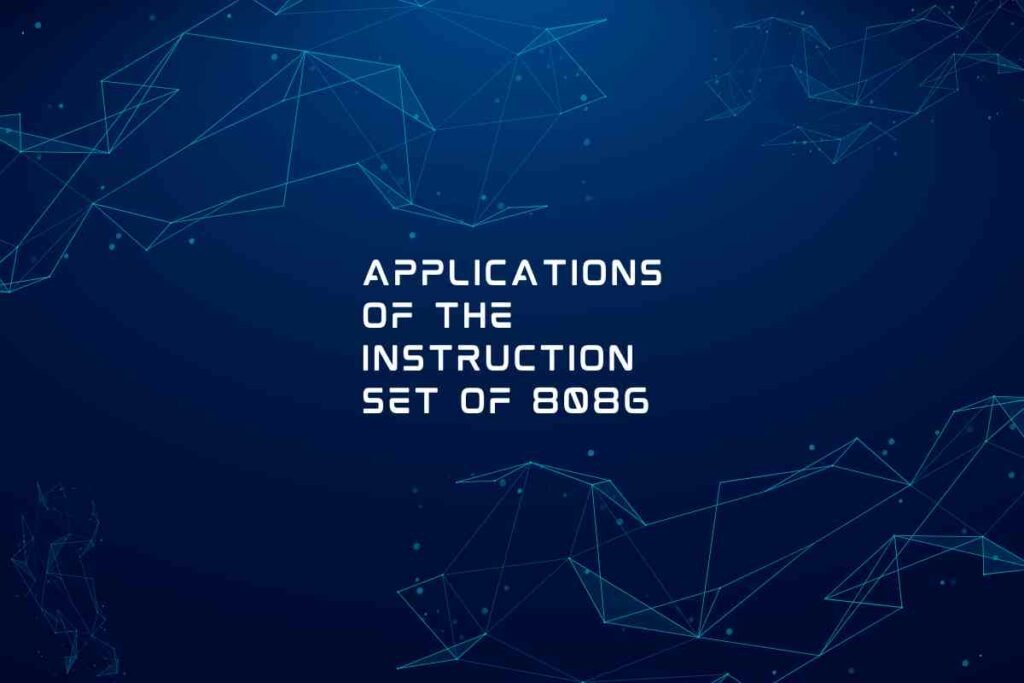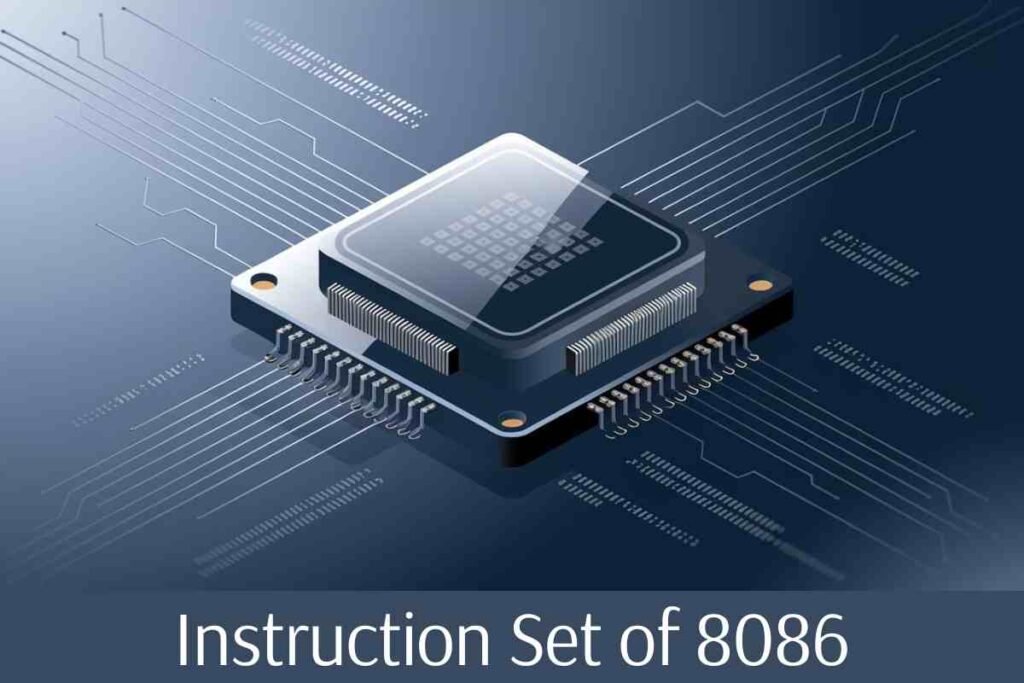The instruction set of 8086 is a foundational component of computer architecture, enabling efficient interaction between hardware and software.
This versatile instruction set includes commands for data transfer, arithmetic, logic operations, program control, and string handling.
Its structured and robust nature has made it an essential part of computer engineering and programming education.
In this article, we will explore the different types of instructions included in the 8086 instruction set, their functionality, and examples of their use. By understanding these, programmers and enthusiasts can better appreciate its capabilities.
What is the Instruction Set of 8086?

The instruction set of 8086 is a collection of machine-level commands designed to perform specific operations on the Intel 8086 microprocessor.
These instructions are categorized based on the type of function they perform, such as data transfer, arithmetic, logic, branching, and control operations.
Each instruction consists of an opcode, which specifies the operation, and operands, which determine the data or memory locations involved.
Categories of 8086 Instructions

1. Data Transfer Instructions
Data transfer instructions in the instruction set of 8086 handle the movement of data between registers, memory, and I/O ports.
- MOV: Transfers data between registers, memory, or ports.
- LDS/LES: Loads data from memory to registers along with segment registers (DS or ES).
- LEA: Loads the offset of a memory location into a register.
- PUSH/POP: Transfers data to and from the stack.
- IN/OUT: Transfers data between I/O ports and the accumulator.
These instructions are crucial for managing and organizing data efficiently during program execution.
2. Arithmetic Instructions
Arithmetic instructions allow basic mathematical operations such as addition, subtraction, multiplication, and division.
- ADD/ADC: Performs addition with or without carry.
- SUB/SBB: Performs subtraction with or without borrow.
- MUL/IMUL: Handles unsigned and signed multiplication.
- DIV/IDIV: Performs unsigned and signed division.
- INC/DEC: Increments or decrements a register or memory value by 1.
These instructions are often paired with logical operations for complex computations.
3. Logical Instructions
Logical operations in the instruction set of 8086 include AND, OR, XOR, NOT, and TEST. These are used to manipulate data at the bit level.
- AND/OR/XOR: Perform bitwise logical operations.
- NOT: Computes the one’s complement of a value.
- TEST: Compares data using bitwise AND without modifying the destination.
These instructions are vital in scenarios like mask generation and condition checks.
4. Branch Instructions
Branch instructions allow control flow modifications, such as jumping to specific memory locations based on conditions.
- JMP: Performs an unconditional jump to the specified address.
- Conditional jumps: Instructions like JE/JNE, JA/JB, JG/JL check specific conditions (e.g., zero flag or carry flag) before branching.
- CALL/RET: Used for subroutine calls and returning to the main program.
These instructions are essential for implementing loops, conditional operations, and modular programming.
5. Rotate and Shift Instructions
Rotate and shift instructions manipulate data at the bit level by moving bits left or right.
- ROL/ROR: Rotates bits left or right without carry.
- RCL/RCR: Rotates bits left or right through the carry flag.
- SHL/SAL/SHR/SAR: Shifts bits left or right while inserting zeroes or sign bits.
These are commonly used in cryptography and digital signal processing.
6. String Manipulation Instructions
String instructions in the instruction set of 8086 simplify operations on sequences of bytes or words stored in memory.
- MOVS: Moves data from one memory location to another.
- CMPS: Compares strings byte by byte.
- LODS/STOS: Loads or stores data to/from registers.
- REP: Repeats the specified string operation for a count specified in CX.
String instructions enable efficient handling of large data sets in applications like text processing.
7. Processor Control and Flag Manipulation Instructions
These instructions control the behavior of the processor and manipulate flag registers.
- CLC/CMC/STC: Clear, complement, or set the carry flag.
- CLI/STI: Disable or enable interrupts.
- NOP: Performs no operation but increments the instruction pointer.
- HLT: Halts the processor.
Such instructions are critical for managing the internal state of the microprocessor and ensuring stable operation.
Applications of the Instruction Set of 8086

The instruction set of 8086 has been widely used in a variety of fields:
- Embedded Systems: Utilized for efficient hardware-software interaction.
- Educational Tools: Used in computer science courses for understanding low-level programming.
- Legacy Systems: Found in older industrial and control systems.
Conclusion
The instruction set of 8086 is a cornerstone in the evolution of microprocessors, offering a robust and versatile toolkit for developers.
Its wide-ranging instructions, from data transfer to string manipulation, have made it a standard in computer architecture and programming education. Understanding its operations provides valuable insights into the foundations of modern computing.
For programmers and engineers, mastering the 8086 instruction set remains a valuable skill, bridging the gap between classic and contemporary computing methodologies.
Looking for more great reads? Check out our homepage maxxfour.in for trending articles and insightful blog posts on various topics.
FAQs
What is the purpose of the instruction set in 8086?
The instruction set provides a standard way to perform operations like data transfer, arithmetic, logic, and control, enabling efficient programming and execution.
How are data transfer instructions used in the instruction set of 8086?
Data transfer instructions move data between registers, memory, and I/O ports, allowing seamless data manipulation and storage.
Why are rotate and shift instructions important?
Rotate and shift instructions are critical for bit-level operations like encryption, error correction, and optimization of algorithms.
What is the role of branch instructions in the 8086 microprocessor?
Branch instructions control program flow by enabling jumps and conditional executions, essential for loops and decision-making structures.
How are string instructions utilized?
String instructions simplify operations on sequences of bytes or words, making them efficient for text and data processing.
What are arithmetic instructions in the instruction set of 8086?
Arithmetic instructions perform basic mathematical operations like addition, subtraction, multiplication, and division.
Can the instruction set of 8086 be used in modern processors?
While modern processors have evolved, the 8086 instruction set laid the foundation for contemporary instruction sets and is still relevant in educational contexts.







